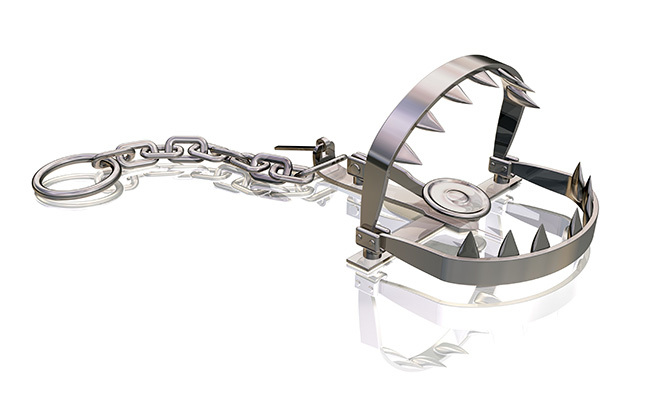Pseudo‐Science Publishers: the Latest Pitfalls

This article is the second in a series that discusses the issue of predatory publishers and attempts to illustrate the practices of these publishing houses that publish academic theses in book form. This article focuses on publishers with unethical practices: the publishers of pseudo‐science journals.
_______________________________________
Pseudo‐Science Publishers
Publishers of pseudo‐science take on more varied forms than publishers of academic theses because their practices are in a constant state of change. This is the reason why they are more difficult to identify. Their activities may vary from dubious practices to activities that are undoubtedly illegal.

These publishers usually work with open access publication model, in which expenses for processing articles are sometimes billed to authors so that the publication can then be disseminated free of charge. This type of publication model basically focuses on reducing the market-dominant oligopoly of big publishers in scientific information distribution networks by allowing the results of research (financed by public funding) to circulate more openly (Bourgault, 2013). Although this is a legitimate publication model that has increased in popularity over the course of recent years, these “predatory publishers” twist this business model and tarnish the image of free access publications.

Just like the publishers of theses, the publishers of pseudo‐science journals solicit researchers en masse to convince them to publish in their journal and to become a member of their editorial or review board. They exhibit a wide range of dubious practices, a few of which are mentioned below (Bourgault, 2013; Beall, 2015):
- Applicable processing fees for publishing articles are not clearly listed or mentioned; the bill is then sent to scholars after their article is published.
- Refusal to reimburse processing fees when an article is rejected for publication.
- Suggesting that researchers become honorary editors (without pay) for a special issue of their journal … on the condition that they themselves find collaborators for this issue. This practice ends up being like a simple pyramid scheme.
- Publishing articles that have already appeared in other journals.
- Mentioning that certain authors are members of their editorial committee without their consent.
- Lie about their location by mentioning that they are located in America or in Europe when they are (usually) based in Asia, or by adding adjectives like “American” or “British” in their name.
- Make promises in regards to peer review in two to three weeks, even a few days, while any such process would usually require several months. Or they may simply do no peer review at all.
- Ultimately, they may appropriate the identity of prominent journals by copying their title or web site, and then solicit publications in their name when contacting authors.
In open access publication systems it is important to remember that it is not unusual for authors to pay a processing fee for their articles. The fraudulent (or at least somewhat dubious) practices that may issue from these publishers is through a lack of transparency as far as publication fees for their articles are concerned; they may present themselves as scientific journals when they carry out no peer review, or appropriate the fame of researchers or reputable journals without permission.
To help researchers better identify disreputable journals or publishers, Jeffrey Beall, Associate Professor and Librarian at the University of Colorado, proposed until January 2017 a blacklist of these “predatory publishers” at his web site Scholarly Open Access. It was also possible to consult a list of criteria there, which he used to identify these publishers that use objectionable practices.

Here is a list of questions inspired by the Beall criteria that exposes those publishers or journals with dubious practices (Beall, 2015; Brock University Libraries; Cameron, 2015):
- Does the publisher publish a large number of journals with little content?
- Do the journals published by this publisher cover themes that are exceptionally broad (ex. Journal of Science) or do they combine subjects that are not usually covered at the same time (ex.: International Research Journal of Humanities, Engineering and Pharmaceutical Sciences)?
- Are these journals indexed in a reputable database (ex. Scopus ou Web of Science)? Are they indexed in university library catalogues? Are they listed in the DOAJ (Directory of Open Access Journal)?
- If a journal mentions having a certain impact factor, is this journal listed in the Journal Citation Reports? Does it actually demonstrate this impact factor?
- Does the journal have an ISSN? Do the articles have a valid DOI?
- Does the journal have an editorial board? Does it consist of enough members (at least four members)? Are the members affiliated with universities or research centres? Are they specialists in the subject? Do they know that their name appears on the Editorial Board? (To find out, check out the researcher’s web site. If the site doesn’t mention that he is on the editorial review board, he may not know that his name is associated with this publication!)
- Do several journals published by the same publisher also share the same editorial board?
- Does the journal request that the researcher submit an article with peer review suggestions?
- Does the journal have a clear editorial policy? Does it have a digital preservation policy?
- Does the publisher’s web site or the journal offer enough information so that they can be contacted? Does the “Contact Us” page actually include contact information?
- Does the journal, its official letters or its web site have grammatical or spelling errors?
- Does the web site seem amateurish? Be careful – a web site that seems professional is no guarantee for the quality of a scientific journal.
In spite of everything, there is no magic formula to identify these publishers. As we mentioned, their practices are in a state of constant change. Certain members of the scientific community have criticized the Beall criteria. Beall was criticized for harbouring prejudice for publishers and journals in developing countries. He has also been accused of smearing open access journals. Others have concluded that the Beall list includes journals whose practices may be awkward, but not necessarily fraudulent (Tamburri, 2013). It is true that it is often difficult to distinguish between a new journal whose reputation is not yet established and a publisher with ill intent.

To avoid the pitfalls of these publishers, here are a set of practices and attitudes that you may apply (Bourgault, 2013; Université d’Ottawa; Cameron, 2015):
- Be critical, especially if a publisher solicits you for direct publication.
- Be aware of the scientific publication process, especially if you are a young researcher. Discuss publication experiences with your professors and colleagues.
- Research the journal or editor yourself by checking their web site and indexing in various databases; check whether they are on a DOAJ list or check the impact factor directly through the Journal Citation Report. Check the previous issues or other publications from the same publisher to evaluate the quality of the articles that were already published.
- Contact the publisher yourself so that you know the terms of the publishing contract.
To help you select a magazine for your publication, please refer to the guide designed by ÉTS librarians on the subject: Choix d’une revue où publier. (Choosing a magazine for publication).
In conclusion, if you wish to make the results of your research available through open access, please note that you do not have to pay processing fees to a publisher. In fact, most traditional publishers allow self-archiving and dissemination of scientific articles in an institutional repository such as Espace ÉTS. To learn more on the advantages of institutional repositories, read the article entitled Open Access Journals: A Great Option for Researchers or just ask your librarian.
Addendum – 2017
Jeffrey Beall’s Scholarly Open Access website, which listed magazines and publishers of questionable practices, was closed in January 2017. It is still possible to find some websites with archived versions of his list of magazines and editors to avoid, or to view an archived version of the Scholarly Open Access website using the Wayback Machine tool.
New tools have also been developed in recent years to help researchers identify trusted journals. One of them is the Think. Check. Submit. website, which provides evaluation criteria and critical thinking to help make wise choices when submitting manuscripts.



